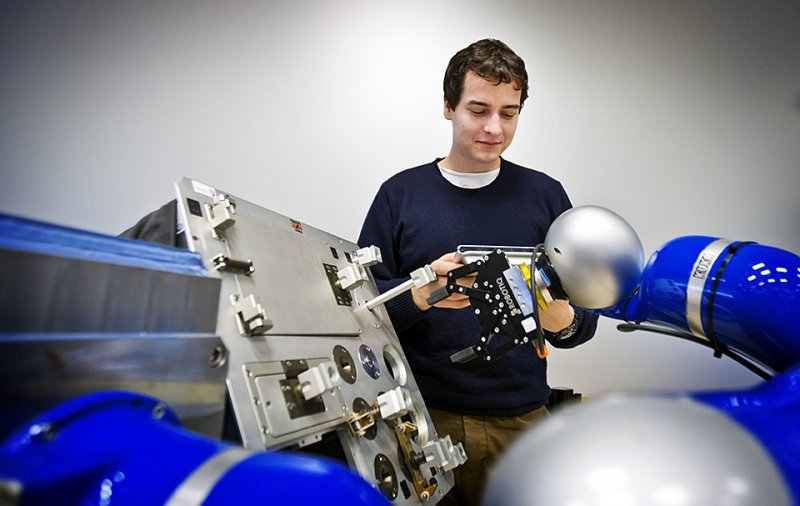Haptic Interaction
Systematic Framework for Teleoperation with Haptic Shared Control
Teleoperation – performing tasks remotely by controlling a robot – permits the execution of many important tasks that would otherwise be infeasible for people to carry out directly. Nuclear accident recovery, deep water operations, and remote satellite servicing are just three examples. Remote task execution principally offers two extremes for control of the teleoperated robot: direct telemanipulation, which provides flexible task execution, but requires continuous operator attention, and automation, which lacks flexibility but offers superior performance in predictable and repetitive tasks (where the human assumes a supervisory role). This dissertation explores a third option, termed haptic shared control, which lies in-between these two extremes, and in which the control forces exerted by the human operator are continuously merged with ‘guidance’ forces generated by the automation. In a haptic shared control system, the operators continually contribute to the task execution, keeping their skills and situational awareness.
It is common practice to design the haptic shared control systems heuristically, by iteratively adjusting them to the satisfaction of the system designer, primarily based on human-in-the-loop experiments.
In this dissertation, we aim to improve this design and evaluation process. Our goal is to follow a system-theoretic approach and formalise the design procedures of haptic shared control systems applied to teleoperation. Such a formalisation should provide designers of future HSC systems with a better understanding and more control over the design process, with the ultimate goal of making the HSC systems safer, easier and more intuitive to use, and overall to perform better.
The research goal studied in this dissertation has been divided into three parts:
- Develop methods to allow coping with operator-related uncertainties associated with operator reaction to human-machine goal conflicts and external disturbances.
- Reduce the teleoperation system-related uncertainties caused by inaccurate knowledge of the remote environment geometry and communication delays
- Develop a unifying framework for analysis of haptic shared control systems
The main conclusions are:
- The approach of tuning the strength of the haptic feedback on the basis of the ‘relax task’ setting of the neuromuscular system, led to tuning settings that were appreciated by the operators,maintaining satisfactory task performance, with both physical and mental workload reduction.
- An operator grip force-based, adaptable-authority haptic shared controller can increase task performance over an ‘under-tuned’ fixed-authority guidance system. Moreover, the effort of the operator necessary to overcome an incorrect guidance can be significantly reduced with respect to the fixed-authority systems.
- The HSC system guidance forces and the natural feedback forces interact with each other in a nontrivial way, effectively masking potential inaccuracies of the guidance system from the operator, which can be unsafe.
- The presented systematic methods can indeed be used to make accurate predictions about the performance of the studied teleoperator systems with the addition of haptic guidance, as the predictions were confirmed by both numerical simulations and experimental trials.
This work was completed with a successful PhD defence in April 2017


